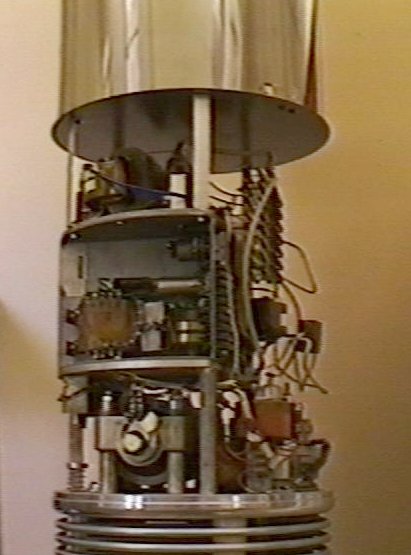
This item represents the 1970s in the '100 Years of Physics at UQ Tour'.
In the 1970s, research began in several other areas besides ionospheric physics. These included theoretical astrophysics and experimental spectroscopy.
Purchased second hand from the Australian National University in Canberra, this accelerator was used by the Department's Beam Foil Group. The van de Graaff generated a collimated beam of 40Ar+ ions of energy 800 keV that struck an ultrathin carbon foil. The ions were excited into higher energy levels, relaxing in a few nanoseconds by emitting light. Measurement of the light intensity gave information useful in the interpretation of astronomical observations. In the work described in the paper referred to below, the polarisation of excited levels in the ions was measured and the effect of polarisation resulting from optical cascades on time-resolved quantum beat measurements was investigated.
We have preserved only the accelerator, and not the pressure chamber that enclosed it, or the evacuated beamlines. The metal shell terminal at the top of the apparatushas been lifted to allow vision of what it covered. A rubber belt carries charge up to the top where it collects on the polished dome, raising the potential by up to 1.2 million volts.You can see the belt driven by the motor at the base and gauges for measurement of the pressure of the ion source gas. Concentric cooling coils surround the base.
This item is part of the UQ Physics Museum ‘100 Years of Physics at UQ’ Tour
< Previous Item | Return to Tour Menu | Next Item >
J.D.
